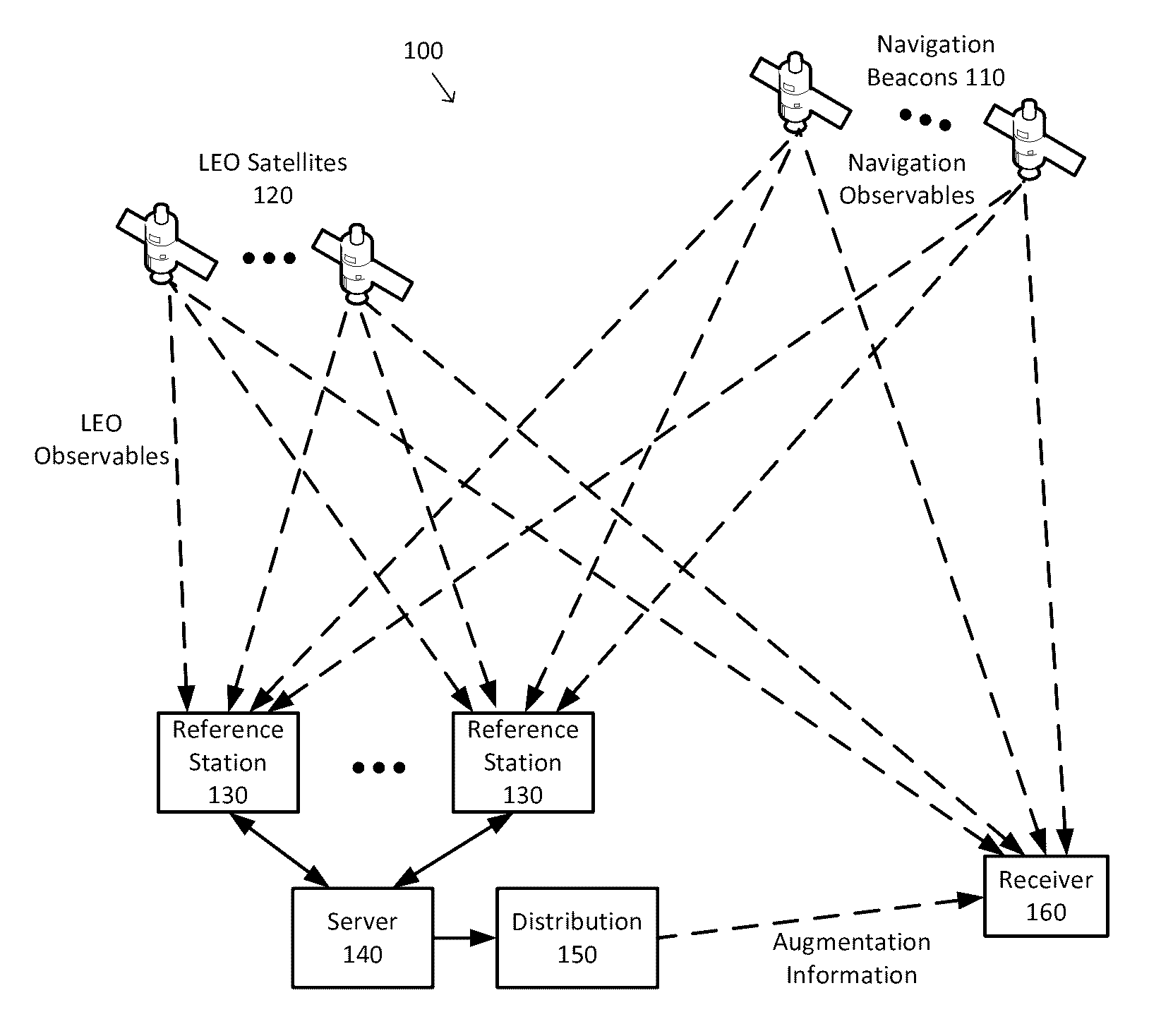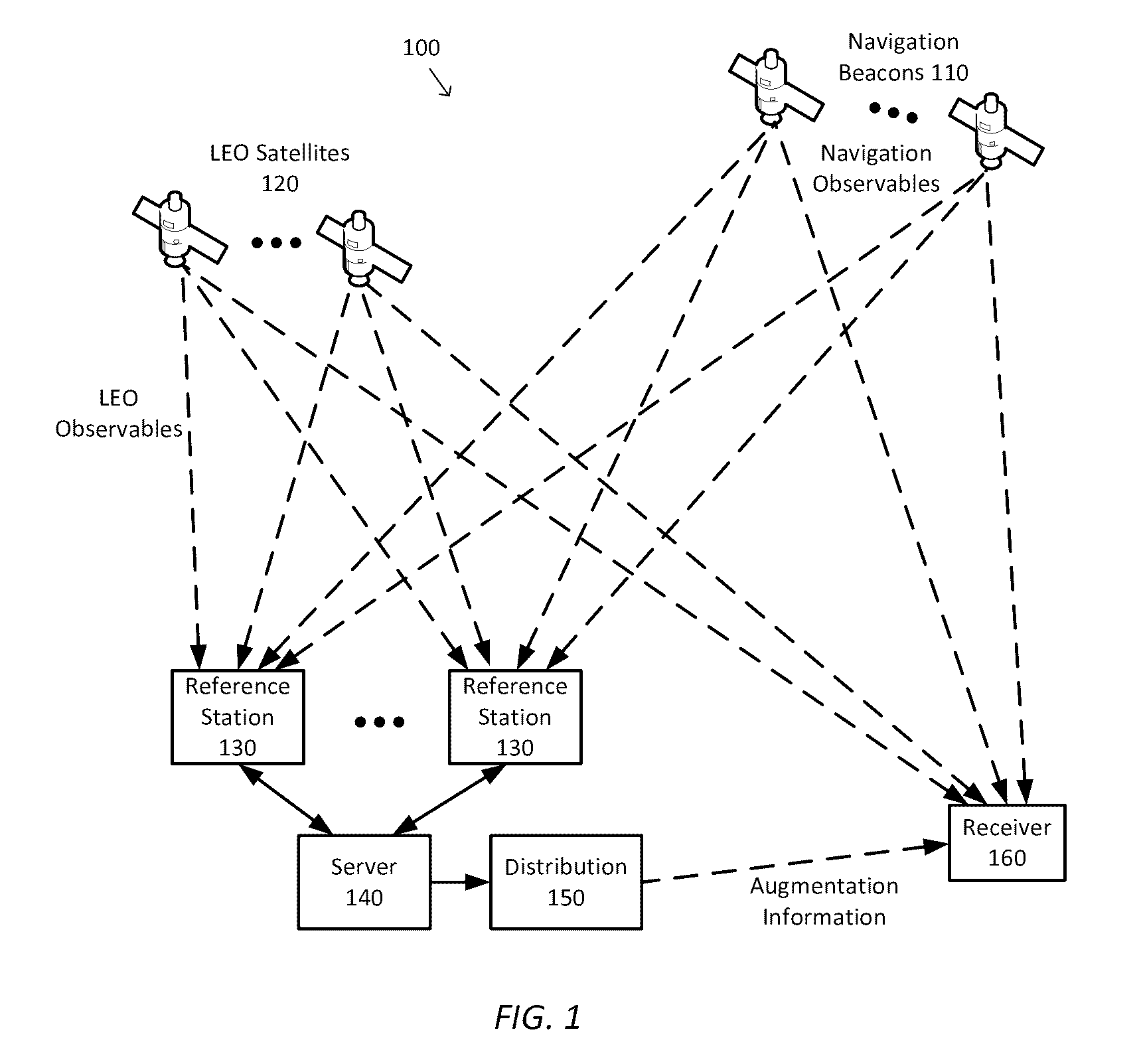Systems, methods, devices and subassemblies for creating and delivering a GNSS augmentation service
a technology of gnss and augmentation service, applied in the field of systems, methods, devices and subassemblies for creating and delivering gnss augmentation services, can solve the problems of limiting radio navigation systems to local two, not addressing many interesting positioning problems, and rtk systems are typically fairly expensive, so as to improve the time to achieve geometric diversity, improve the quality of pvt coverage, and reduce the convergence time
- Summary
- Abstract
- Description
- Claims
- Application Information
AI Technical Summary
Benefits of technology
Problems solved by technology
Method used
Image
Examples
Embodiment Construction
[0020]FIG. 1 is a simplified diagram of an augmented radio navigation system 100 according to some embodiments. As shown in FIG. 1, augmented radio navigation system 100 includes one or more navigation beacons 110 and one or more LEO satellites 120. In some embodiments, the navigation beacons 110 may include MEO satellites, geostationary satellites, geosynchronous satellites, terrestrial beacons, and / or the like. In some examples, the LEO satellites 120 may also be referred to as navigation beacons. In some examples, the MEO satellites may be GPS satellites and / or the LEO satellites 120 may be Iridium satellites. Each of the navigation beacons 110 and the LEO satellites 120 transmit one or more signals that may become navigation and LEO observables, respectively, when they are received by one or more reference stations 130. Depending upon the locations of the navigation beacons 110, the LEO satellites 120, and the reference stations 130, each of the reference stations 130 may observ...
PUM
 Login to View More
Login to View More Abstract
Description
Claims
Application Information
 Login to View More
Login to View More - R&D
- Intellectual Property
- Life Sciences
- Materials
- Tech Scout
- Unparalleled Data Quality
- Higher Quality Content
- 60% Fewer Hallucinations
Browse by: Latest US Patents, China's latest patents, Technical Efficacy Thesaurus, Application Domain, Technology Topic, Popular Technical Reports.
© 2025 PatSnap. All rights reserved.Legal|Privacy policy|Modern Slavery Act Transparency Statement|Sitemap|About US| Contact US: help@patsnap.com



